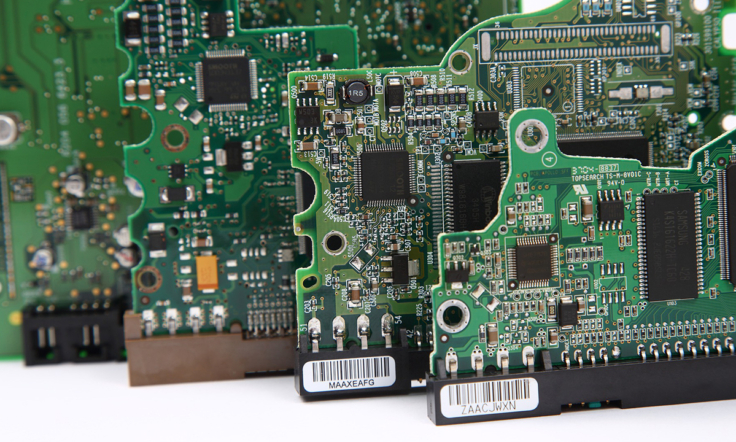
PCB stands for printed circuit board. Before PCB circuit, the electronic circuits formed by point-to-point cabling which is complex and hard processes. In this method, frequent malfunctions and short circuits occurred because wire insulations in circuits begin to age and crack over the years. As the size and the cost of electronic components began to decrease, electronic consumer’s goods became more common. As a result of this, manufacturers tried to find a solution to decrease high costs and big sizes. Therefore, PCB emerged.
In order to define the PCB board, we should look at the beginning of 20th century. The first PCB patents were published in the early 1900s. However, the PCBs that we familiar with is used after 2nd world war. In 1925, Charles Ducas from USA applied for a patent. He used the method of creating an electrical path directly on an insulated surface by printing from a stencil with electrically conductive inks. Thus, the method described in the patent named as printed circuit. The first PCB was made in 1943 by an Australian scientist, Dr. Paul Eisler.
Since then, PCB technology was significantly developed. PCBs began to be produced two-sided with the development of techniques that allow the coating of hole walls. After that, solder masks developed to prevent the corrosion on board surfaces. The increasing complexities and densities driving the evolution of the solder mask have led to the need to add laminated copper path layers between layers of non-conductive material. In 1961, multi-layer PCBs are used in USA. The development of transistors and miniaturization of other circuit components has driven more manufacturers to use PCBs for an increasing number of needs. Aerospace equipment, flight instrumentation, computers, and telecommunications products, as well as defense systems and weapons, are all beginning to benefit from the space savings provided by a multilayer circuit board. Following the invention of integrated circuits, the circuit board has continued to shrink in almost every way.
PCB technology continues to be an actively used and developing technology today. As a result, types of PCBs have emerged in line with the needs. PCB type varies according to the area of use.
PCB Types According to the Material
Aluminum Supported PCB
The feature that distinguishes aluminum-supported PCB from other types is its thermal conductivity coefficient. PCBs are widely used in applications requiring high output power such as, power sources, vehicle headlights, traffic lights, engine control devices. PCB specifications are as follows; perfect heat distribution, flexible and durable, aluminum is a good option to distribute the heat from circuit components and it transfer the heat to the atmosphere instead of the rest of the sheet. The PCB manufacturing process has been surprisingly improved, from simple single-layer design to the most complex designs that can be used in aerospace and medicine. It is environmentally friendly in production and recycling. Its thermal conductivity is greater than 0.8.
CEM1
It is the most common material in single-layer PCB producing. Standard CEM-1 material is cellulose-based composite material containing one layer of glass fiber laminate (FR-4) on one surface. CEM-1 is a cheaper alternative to FR-4 material for manufacturing single-layer printed circuit boards. It is close to FR-4 in terms of its electrical properties. Its thermal conductivity is 0.48.
FR4
FR-4 is the most widely used PCB type in electronics. Boards can be made with four to eight layers of material, depending on their specific application. FR-4 circuit boards are made of woven fiberglass and coated with epoxy. It is a hard material. It is resistant to bending and cracking that may occur due to various reasons. Insulation properties are very good. It has a high familiarity among its manufacturers as it is one of the most used materials in PCB production. It is the best choice for multi-layer cards. Its thermal conductivity is 0.25.





